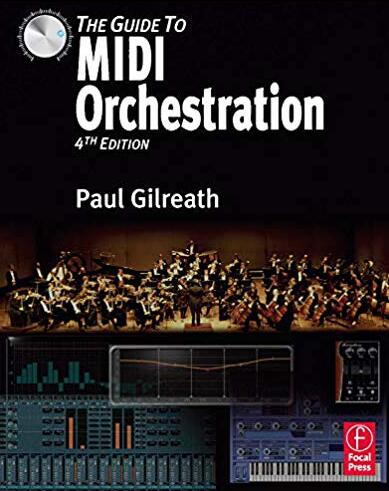
The Guide to MIDI Orchestration

The Guide to MIDI Orchestration
著 者:Paul Gilreath
出版社:Routledge
出版时间:2010
ISBN号:978-0-240-81413-1
页 数:582页
索书号:J614.4/J0604
所在库室:锦江校区图书馆9楼教参阅览室1册
内容简介:
Since its initial release in 1997, Paul Gilreath's The Guide to MIDI Orchestration has been the premiere text on creating realistic emulations of a symphony orchestra using samplers and computer recording techniques. Now in its fourth edition, The Guide to MIDI Orchestration explains how to merge this ever-expanding technology with the artistry of orchestration to produce the most lifelike recordings possible. The book is written for composers, arrangers, and MIDI musicians of all levels, and will be helpful to game composers, film and television composers, traditional orchestral composers, teachers, instructors, and the serious hobbyist.
作者简介
Paul Gilreath is an award-winning composer who creates original music in a variety of styles for video games, film, television, trailers, and broadcast advertising. Gilreath has written theme, underscore and broadcast advertising music for a wide range of clients that include NBC, CBS, Cartoon Network, ESPN, American Airlines and many others. His music has been used multiple times for the Olympic Games broadcasts on NBC and several PGA tournaments on NBC. He scored the feature film No Retreat No Surrender starring Jean Claude Van Damme, Knights of the City starring Curtis Mayfield, and Making Contact directed by Roland Emmerich (Independence Day).
目录:
Chapter 1 Introduction to the Orchestra
Chapter 2 The String Section
Chapter 3 The Woodwind Section
Chapter 4 The Brass Section
Chapter 5The Percussion Section
Chapter 6 The Harp and Piano
Chapter 7 Orchestration Basics
Chapter 8 Equipment and Software Solution
Chapter 9 Recording Note Data
Chapter 10 Sequencing Techniques for Strings
Chapter11Sequencing Techniques for Woodwinds
Chapter12 Sequencing Techniques for Brass
Chapter13 Sequencing Techniques for Percussion
Chapter14 Sequencing Techniques for Harp and Piano
Chapter15 Creating Tempo Changes
Chapter 16 Effects Plug-ins
Chapter 17 Software Samplers
Chapter18 Using Sampled Voices
Chapter 19 The Mix Process
Chapter 20 The Vienna MIR
Chapter 21 Mastering Your Music
Chapter 22 Achieving Specific Moods with Your Orchestrations
Chapter 23 Introduction to Orchestral Libraries